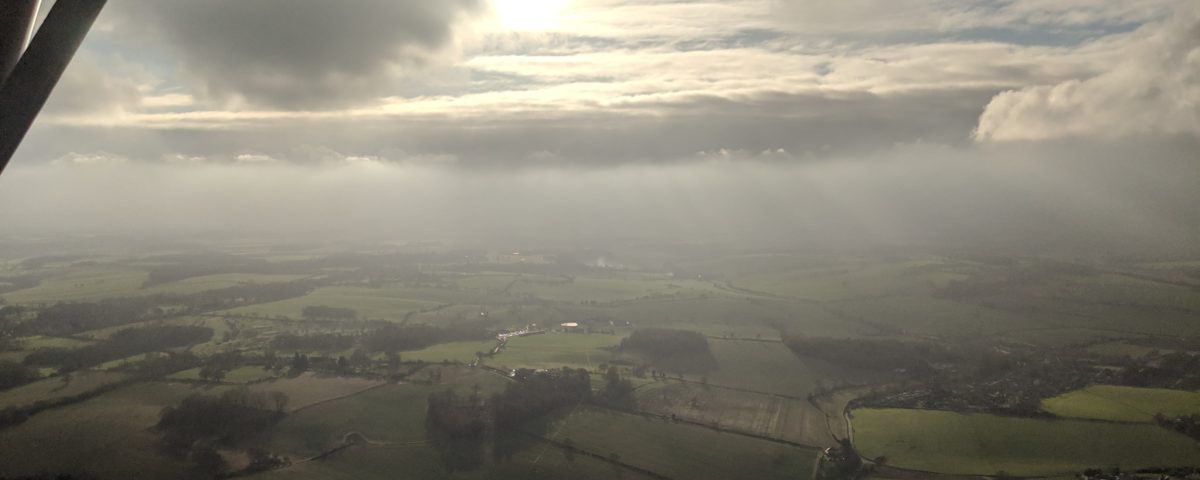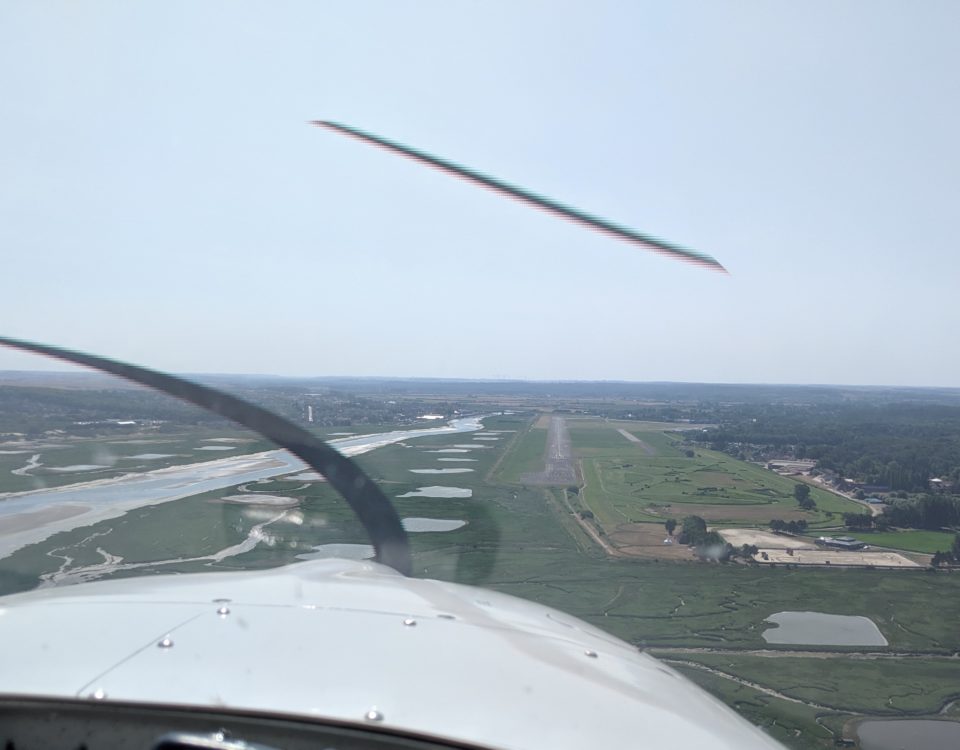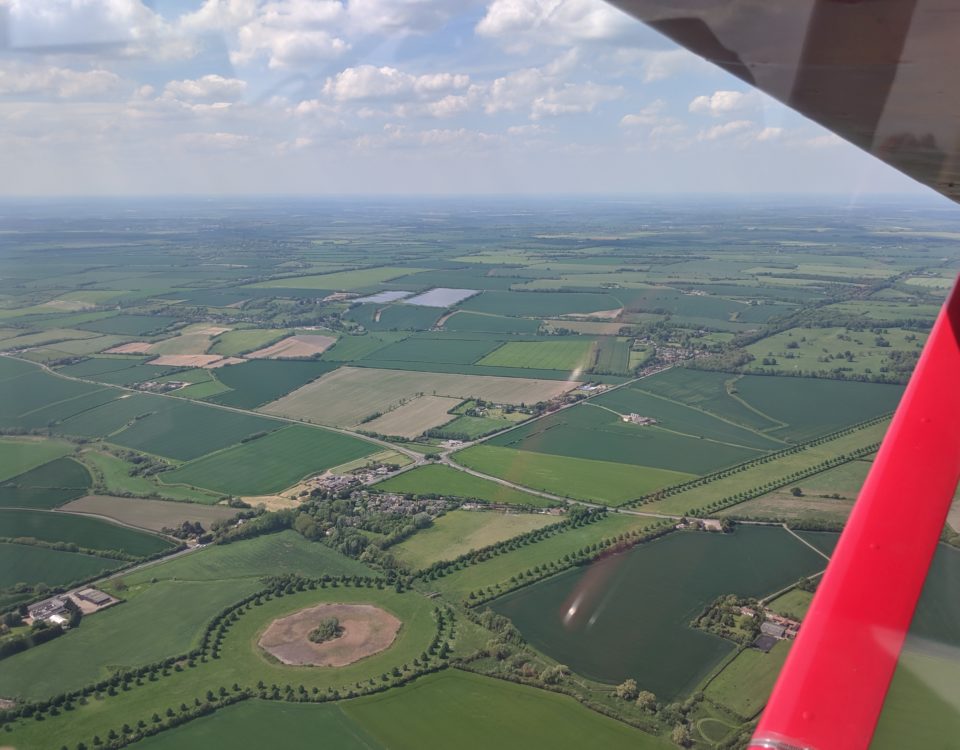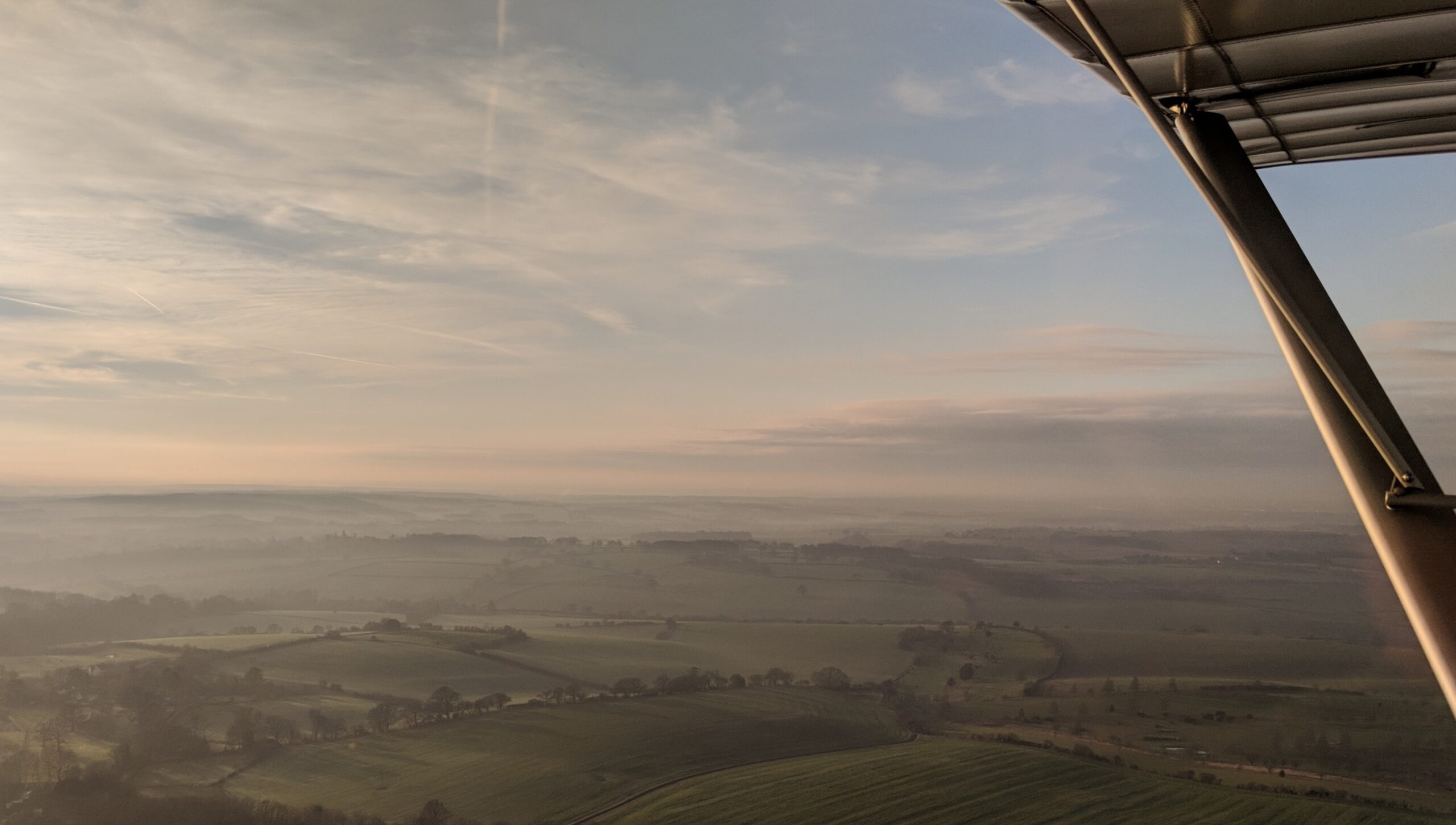
A flying start to the new year
December 29, 2018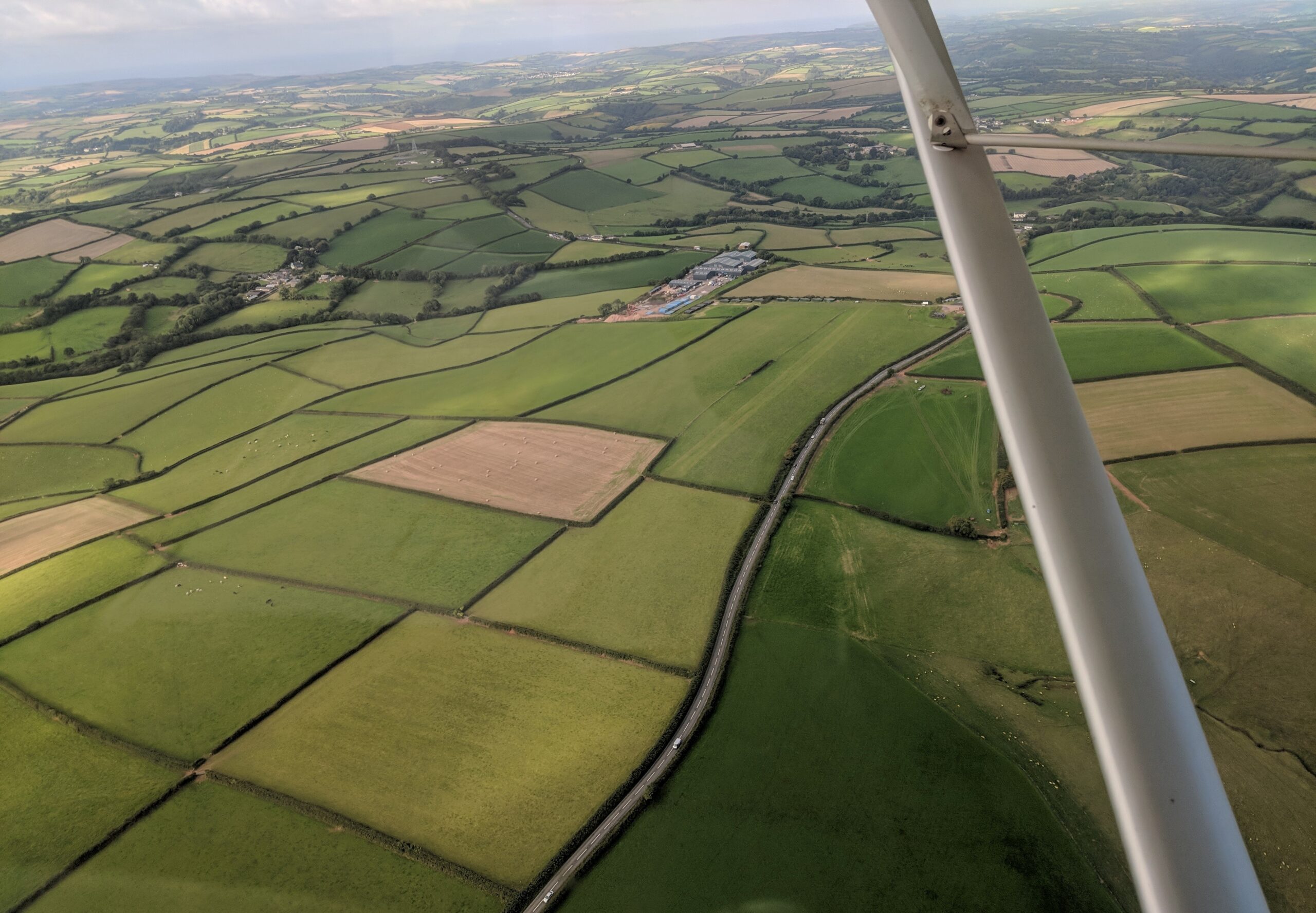
Talk to the locals
January 26, 2019The variables of winter visibility
“It was grim all day today. Flyable, yes, but would you really want to fly in that?”
“Smooth as silk up there!”
Those appear to be the two options for winter flying. As Greg Burns of TwoTwoFly says, “When it’s bad, it’s bad, but when it’s good it’s brilliant! And as with all things flying, you’ve got to be ready and waiting for it.”
This winter seems to have been a particularly gloomy one down South. The photos I have taken in-flight are all shades of grey – from a pale wash to a steely dark. Sure, the cooler winter air is so much less thermic that the flying is generally calm and smooth, so you are often able to trim and fly hands-off.
It’s the visibility that gets to me. It constantly amazes me just how bad anything less than 9999 viz can be. In my mind, though, good visibility is the sort of view I had across the English Channel – blue skies and clear as a bell for probably 40 kms. I could see the French coast from around Southend. Now I must get my head around what feels like looking into the gloom and know that, as “all the nines”, it’s just perfect for flying.
Time after time, I would simply have to shake my head when asked, “Where are you going?” Round the block, for a twenty minute or half hour bimble that keeps your hand and eye in. Days that look great on the forecast turn out to be foggy or simply so dicey in their visibility that I don’t want to venture too far from home. I looked with envy at flying friends further north posting glorious photos of their expeditions and filled in my logbook with ‘Local.’
Three recent trips stand out for me. One was winter flying when it’s wonderful. A brilliant blue sky just days before Christmas where you could see for miles and the only problem was the haze from the low winter afternoon sunshine on the return flight.
The other two involve a new catchphrase in my flying vocabulary. Slant viz. That is what you experience when you are in the weather, whether it is low-grade fog, mist or simply the pollution around us. It is calculated as “the visibility observed by looking downwards and forwards from the cockpit of the aircraft (Meteo France),” and used to work out whether a pilot will be able to see the runway as they approach. That’s the technical bit, but it is also what happens when you go up and see a bank of what looks like bad weather ahead of you, but as you fly, it appears to travel with you. So your range of vision doesn’t change.
Flying south on a day when the forecast was predicting no rain, but some decreased visibility, I found myself unable to relax at our destination airfield. The weather looked forbidding. To be honest, when I went up for a few circuits and looked at what we were heading back into, I wanted to cry. I was also going to be at the helm on this leg. I got short shrift from those around me. “If it’s too bad, turn around and come back here.” There was a glint of blue sky above and a shimmering colour on the clouds. I steeled myself, determined to extend my weather tolerance a little more, knowing this was a challenge I could handle.
I knew the visibility could be down to 8,000 m later, and as we passed over the often-busy area around North Weald and Stapleford, I took a deep breath, hoping my strobe lights would do the trick and happy to be in radio contact with the airfield. It was challenging, and I was pleased most pilots had stayed in bed that day! The concentration was intense, and I was proud of myself for coping with the flight.
Another day, another flight, this time travelling north. That bank of grey cloud seemed to travel with us for a way, but about ten minutes in, it felt as if it was getting closer. I wasn’t really thinking of a rerun of our misty trip to Old Warden, but this time I decided to turn around. There were two planes flying again, and as I reached to press the PTT switch, I heard Dan’s cheery voice. “You on frequency? Don’t like the look of that weather ahead.”
We both turned around back to where the sun was playing on the clouds and had a bimble instead. My dear friend Ted Barrett, who was up with Dan, says, “It’s always best to take the safe option.” Another John said, “My choices will often depend on whether I am heading out or heading home, and what I will cope with to get home, could make me turn around and go back if I met it at the start of a flight.”
While the maximum visibility on TAFs and METARs will always be 9999, for a more detailed indication of visibility in your area, take a look at the Met Office F215 briefing charts.
For more about slant visibility: read this.
A Guide to Visual Flight Rules in the UK.

